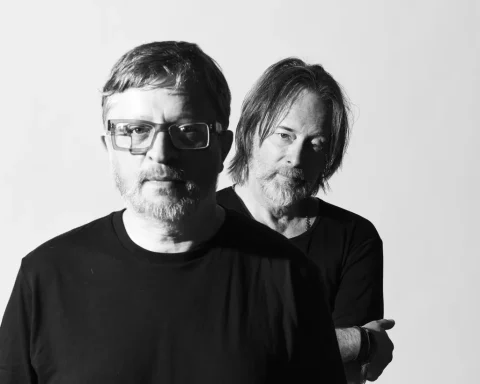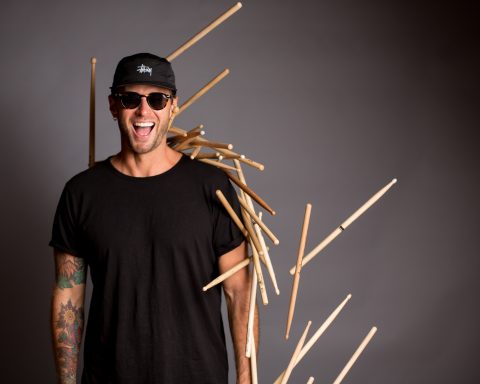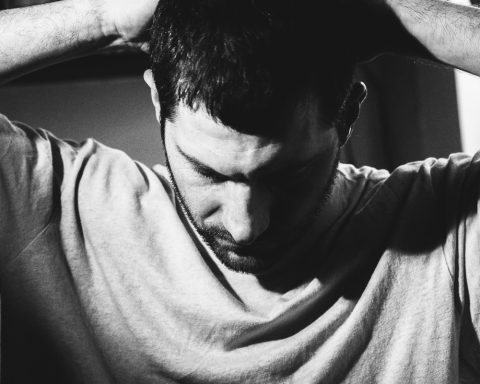Even Jane Weaver’s surname seems to hint at her skill at worldbuilding. Her latest album, Love in Constant Spectacle, continues the trajectory she’s been on for more than a dozen releases, each a self-contained universe. Replete with shimmering synths, cryptic lyrics, and a dimension-shifting video for the single “Romantic Worlds,” the artist had once again woven an immersive experience. Weaver discusses shaking up her studio process, cinematic inspiration, and her history with the groove.
Art Pop Process
What was the recording process like for Love in Constant Spectacle? Tell us about working with John Parish and how that differed from your self-produced work.
In the past, I’ve worked with David Holmes for a couple of tracks and my husband, who’s also a producer. But I felt like I wanted to work with a producer for this one to take an album from the start to when it’s over the line. Normally, I’ll do a concept record, which is different. I wanted to do something where I could go in the studio and record like everybody else rather than going in the studio over two or three years. We had about sixteen songs. We ditched some and recorded twelve or fourteen, of which ten became the album.
Writers call your work art pop, and it has cerebral textures. Do you find certain descriptions frustrating?
I don’t really mind. You know, whatever? I used to balk at “female singer-songwriter,” which makes it a bit irksome. But now it’s gone into this sort of progressive or conceptual or psych zone or psych pop. Maybe it’s due to Spotify or whatever, but people don’t tend to put music in so many categories these days. Unless you’re in a record shop and you’re like, “Where’s the prog section?”
Groove Components
A song like “Emotional Components” and the title track have deep rhythmic pockets. Do you have a history with groove-based music?
When I was growing up, it was the ’70s, so I used to like Kate Bush and electronic stuff like Gary Numan. But one of the first albums I got was a cassette of Hot Chocolate 20 Hottest Hits. It had such a good groove. My early childhood had disco, funk, and soul as well.
One thing John brings to the table is that he’s really good with a groove. He simplifies a lot of stuff. And he’s got wicked percussion. In spots, he’ll put a little egg shaker that sounds groovy. That’s the boldness of a good producer.
"Each song is more like a vignette or a character from a foreign language film—just little scenes in each song and not being too precious."
You used new writing techniques on this record, including randomizing and translating language. How did you come about those?
I wanted to write a more emotional record, but I was uncomfortable with it sounding like it was directly from me, so I flipped it. A lot of the time I just randomized my words and retranslated stuff. It’s not rocket science. Anybody can do it. It’s just that this is the first time I’ve done that. So, for me, it was a new thing.
I never usually finish my lyrics until the last minute, anyway. I struggle with that bit, committing myself to paper—especially if it’s a sensitive or personal thing. I take my time with it.
Each song is more like a vignette or a character from a foreign language film—just little scenes in each song and not being too precious. Sometimes, if you speak some French and then read French or English subtitles translated from a French film, you go, “They’re not saying that. They’re saying this.”

Tranquility and Grief
“Where is tranquility?” is a question you ask on the record. Is that something that often comes up for you in the face of the world’s troubles?
Definitely—and personally. My dad sadly died in August, but at the time I was writing, he was quite sick for five years. For anybody who has a parent or a loved one with a serious illness, anticipatory grief is really painful. But then real life goes on, so you’re constantly searching for how things used to be—trying to get small joys in simple ways. Certain statements I was throwing in were what I was personally going through. You know, “Where is tranquility?” Because you constantly feel on edge.
"By accident, I hear new stuff all the time. I've got a massive amount of vinyl at my disposal in my house, but I don't collect records myself."
Do you seek out new inspiration like French Commune music and protest singer Catherine Ribeiro?
I’m quite lucky that my husband is a record collector. He’s a digger. By accident, I hear new stuff all the time. I’ve got a massive amount of vinyl at my disposal in my house, but I don’t collect records myself. I don’t particularly like Spotify, but it’s easy to link through the algorithm to stuff you’ve never heard before. As my friend once said, “Spotify is almost a miracle.”
With French Commune music, they look so cool as well. They look like they should be living like Gong in a French mansion, eating beans and writing songs all day, then playing at a free festival in a forest. I still find that way of life attractive, even though it’s not possible.
Visual Role-Playing
You create such visually evocative music. Does cinema play into your process at all?
When I have time. I love Italian horror like Dario Argento. In front of me now is this poster of Malá mořská víla, which is the Czech version of The Little Mermaid from the late-’60s—stuff, which has got a really good soundtrack. I like Éric Rohmer, a French director. There are only a handful of characters in his films, and the dialogue is simple. Not a lot happens, but it draws you in.
"We were making this kind of tongue-in-cheek style video commenting on romance. It ends up a bit dystopian towards the end as live-action role-play."
Tell us about the “Romantic Worlds” video which features AI elements when the couple in the clip enters a role-playing game scenario.
We were making this kind of tongue-in-cheek style video commenting on romance. It ends up a bit dystopian towards the end as live-action role-play. I’ve never done it, but I know people who are really into gaming and Dungeons and Dragons.
It’s like a religion to some people, and it’s also quite cute. That’s why I wanted to include a bit of that in it. There’s something quite innocent, something quite naive about it.
Gear and Inspiration
Are there any Roland instruments you’re drawn to use when writing?
For this record, it was more guitar, but previous albums have been primarily synth and bits of guitar. I’ve got a JUNO-6, and it’s easy to write with. I don’t care that it’s not programmable. I’ve also got a Roland Strings synth. I’m not really good with synths that have loads of options. I like the basics; I like turning knobs and pushing faders. That’s me. I don’t like anything too complicated.
"I'm excited about the next thing I do, but I don't know what that will be yet."
After releasing so many records as a solo artist and collaborator, what keeps the inspirational pilot light on?
I guess I feel I’ve still not done enough. I’m working on other projects and thinking about the next album after that. It’s just the way a lot of artists work. They constantly want to progress and do more stuff. This record was simpler and wasn’t particularly conceptual. Flock, for instance, was based on trying to do as many different types of pop songs on one record. I’m excited about the next thing I do, but I don’t know what that will be yet.







